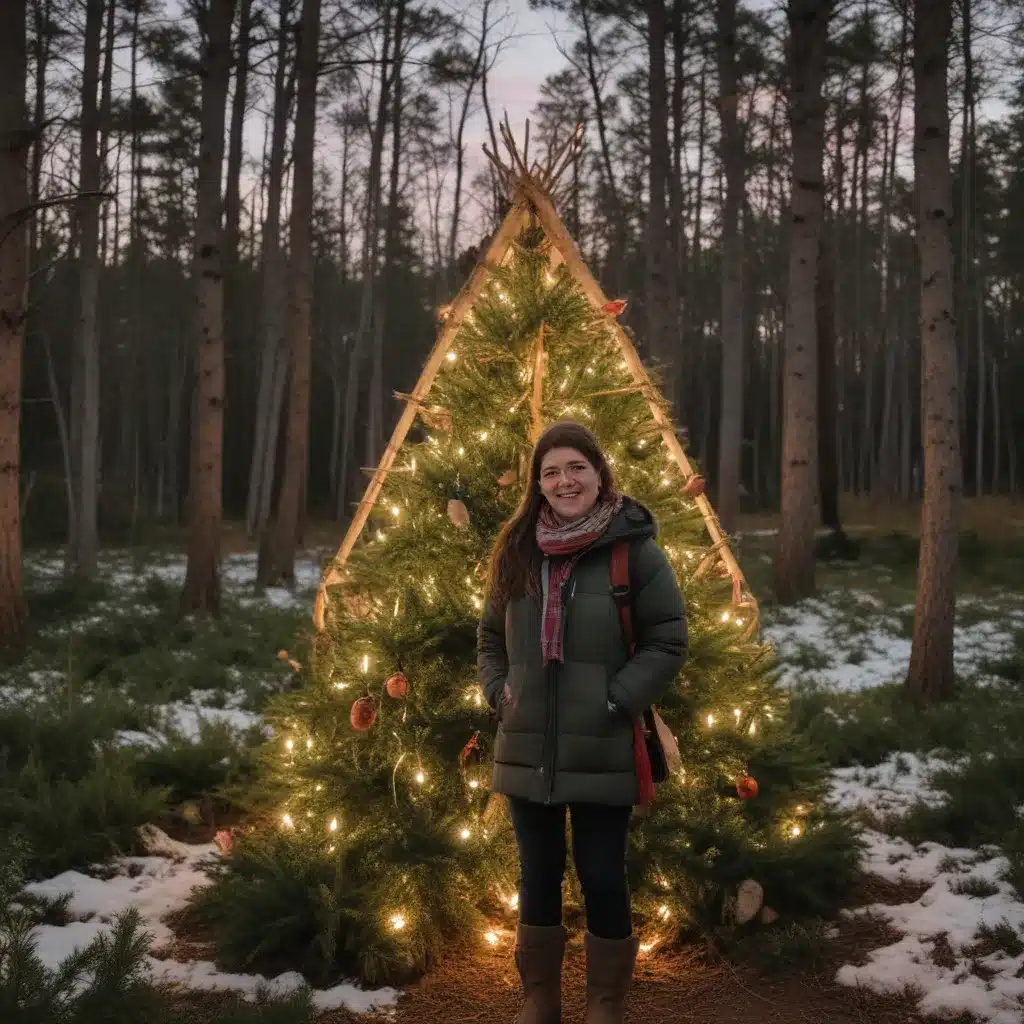
Celebrating the Seasons: Crooked Pines Farm’s Winter Solstice Celebration
As the days grow shorter and the air turns crisp, the arrival of the winter solstice at Crooked Pines Farm marks a time of reflection, renewal, and community. This annual celebration honors the cyclical nature of the seasons and our deep connection to the natural world.
The Winter Solstice
The winter solstice, which falls on December 21st, is the longest night and shortest day of the year. Across cultures and traditions, it has long been a time to welcome the return of the sun and the gradual lengthening of daylight hours.
Winter Solstice Traditions
From the Yule logs of Northern Europe to the luminarias of the American Southwest, solstice celebrations often incorporate the use of light, whether from candles, bonfires, or the sun itself. These traditions symbolize the triumph of light over darkness and the promise of the earth’s renewal.
Solstice Festivities
Many communities gather to mark the solstice with feasting, music, and rituals. Some may perform seasonal dances, tell stories, or engage in contemplative practices to honor the changing of the guard between the old and new year.
Solstice Symbolism
The winter solstice represents a point of balance, a stillness before the gradual awakening of spring. It is a time to reflect on the year that has passed and to plant the seeds of hope for the season to come.
Crooked Pines Farm
Nestled amidst rolling hills and lush woodlands, Crooked Pines Farm has been a fixture in the local community for over half a century. Founded in 1967 by the Wilcox family, the farm has evolved into a vibrant hub of agricultural education, outdoor exploration, and seasonal celebrations.
Farm Background
Crooked Pines Farm encompasses 120 acres of diverse ecosystems, including organic vegetable and herb gardens, a pollinator-friendly apiary, a small herd of heritage breed livestock, and miles of nature trails. The farm’s mission is to foster a deep appreciation for the land, its cycles, and the importance of sustainable, regenerative agriculture.
Farm Offerings
Throughout the year, Crooked Pines Farm offers a variety of educational programs, hands-on workshops, and family-friendly events. Visitors can learn about companion planting, seed saving, and the crucial role of pollinators in a healthy ecosystem. The farm also sells its fresh produce, honey, and value-added products through a popular community-supported agriculture (CSA) program and at local farmers’ markets.
Farm Events
One of the farm’s most beloved events is the annual Winter Solstice Celebration, which brings the community together to honor the changing of the seasons and the enduring cycle of life.
The Winter Solstice Celebration
Celebration Overview
On the longest night of the year, Crooked Pines Farm transforms into a magical, lantern-lit wonderland. Families, friends, and neighbors gather to share in the warmth of a crackling bonfire, sip hot apple cider, and enjoy a delicious farm-to-table feast.
Celebration Activities
Throughout the evening, guests can participate in a variety of activities that connect them to the land and the rhythms of nature. Children might create nature-inspired crafts, such as pine cone bird feeders or dried fruit garlands, while adults engage in guided mindfulness walks through the snow-dusted trails. The highlight of the event is a candlelit procession, where participants carry handmade lanterns and celebrate the return of the sun.
Celebration Significance
For the Crooked Pines Farm community, the Winter Solstice Celebration is more than just a festive gathering. It is a time to pause, reflect, and honor the cycles of the natural world. By coming together to mark this pivotal moment, participants deepen their understanding of their place within the larger ecosystem and renew their commitment to sustainable stewardship of the land.
Seasonal Transitions
Marking the Seasons
At Crooked Pines Farm, the changing of the seasons is a time of great significance. Each shift in the natural world is celebrated with specific rituals, traditions, and educational programs that help connect visitors to the rhythms of the land.
Honoring Nature’s Cycles
From the vibrant blossoms of spring to the brilliant foliage of autumn, the farm’s diverse landscapes provide a living, breathing canvas for observing the cycles of growth, decay, and renewal. By engaging with these natural cycles, both young and old develop a deeper appreciation for the fragility and resilience of the natural world.
Connecting to the Land
Whether it’s planting cover crops in the fall, mulching garden beds in the winter, or harvesting the first tender greens of spring, the hands-on activities at Crooked Pines Farm encourage a tangible connection to the land. This embodied understanding fosters a sense of stewardship and a commitment to sustainable agricultural practices.
The Role of Community
Gathering Together
At the heart of Crooked Pines Farm’s seasonal celebrations is the power of community. By coming together to mark the changing of the seasons, families, neighbors, and visitors forge meaningful connections and cultivate a shared sense of belonging.
Shared Experiences
Through participation in activities like lantern-making, solstice processions, and farm-fresh feasts, attendees create lasting memories and deepen their understanding of the natural world. These shared experiences foster a sense of collective responsibility and a commitment to preserving the land for future generations.
Building Traditions
The Winter Solstice Celebration, along with the farm’s other seasonal events, has become a much-anticipated tradition for many local families. As these rituals are passed down from one year to the next, they help to strengthen the bonds within the community and instill a reverence for the natural cycles that sustain us all.
As the sun sets on the longest night of the year, the Crooked Pines Farm community gathers to honor the changing of the seasons and the promise of renewal. Through hands-on learning, shared experiences, and the creation of enduring traditions, this annual celebration serves as a testament to the power of connecting with the land, with each other, and with the rhythms of the natural world.


